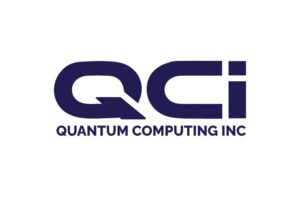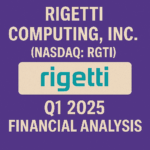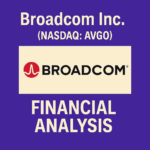Quantum Computing Inc. (QUBT) Stock Analysis

Quantum Computing, Inc. (NASDAQ: QUBT) Stock Analysis
Sector/Industry: Quantum Computing & Advanced Computing
Analysis Date: March 6, 2025
1. Company Overview
Quantum Computing, Inc. (QUBT) focuses on developing quantum software and quantum-ready solutions for commercial and government applications. The company aims to bridge classical and quantum computing, offering a range of services and tools to help enterprises explore and adopt quantum computing capabilities.
- Core Products/Focus: Quantum software platforms, quantum-ready algorithms, and consulting services.
- Competitive Landscape: Quantum computing is a nascent market, with competition from other quantum hardware and software firms (e.g., D-Wave, IonQ, Rigetti, IBM’s quantum division). The industry is still early-stage with evolving technology and uncertain commercial timelines.
2. Financial Performance
a. Revenue & Growth
- TTM Revenue: $386,000
- Revenue Growth (YoY): +35.61%
Analysis:
Quantum Computing, Inc.’s revenue is minimal, reflecting the early-stage nature of the quantum computing market. While revenue growth is positive (+35.6%), the absolute revenue base remains quite small.
b. Profitability
- TTM Net Income: -$24.15 million (net loss)
- EPS (TTM): -$0.28
- Profit Margin: Not explicitly listed, but negative overall.
Analysis:
As an emerging technology company, QUBT operates at a loss, investing heavily in R&D and product development. Negative net income is typical for early-stage quantum firms.
c. Margins
- Gross Margin (TTM): ~22.80%
- Operating Margin (TTM): -6,114.51% (due to extremely low revenue base)
- EBITDA (TTM): -$20.26 million
Analysis:
Gross margin is about 23%, though the extremely small revenue base and significant operating expenses result in very large negative operating and EBITDA margins. This underlines the high overhead relative to modest revenues.
d. Free Cash Flow
- Operating Cash Flow (TTM): -$17.41 million
- Capital Expenditures (TTM): -$3.12 million
- Free Cash Flow (TTM): -$20.52 million
Analysis:
The company is burning cash, with negative free cash flow of around $20 million over the past year. This is common for a pre-revenue or low-revenue R&D-intensive firm in quantum computing.
3. Balance Sheet & Liquidity
- Cash & Short-Term Investments: $3.06 million
- Total Debt: $7.81 million
- Net Cash Position: -$4.75 million or about -$0.04 per share
- Equity (Book Value): $60.44 million
- Working Capital: $1.48 million
- Debt / Equity: 0.13
Analysis:
The company’s net cash is negative, with $3.06 million in cash vs. $7.81 million in debt. Although the overall debt/equity ratio is still relatively low (0.13), the negative net cash suggests limited liquidity runway if losses persist.
4. Valuation
- PE Ratio (TTM): n/a (negative earnings)
- Forward PE: n/a
- PS Ratio (TTM): ~1,764 (very high due to tiny revenue)
- EV/Sales (TTM): ~1,776
- P/FCF Ratio (TTM): n/a (negative FCF)
Analysis:
Valuation metrics like PS or EV/Sales appear extremely high because revenue remains minimal. The market is pricing QUBT primarily on potential future quantum computing breakthroughs rather than near-term financial metrics.
5. Market Performance
- 52-Week Price Change: +533.09%
- Beta (5Y): 3.26
Analysis:
QUBT’s stock price soared over +500% in the past year, reflecting investor enthusiasm for quantum computing. However, the high beta (3.26) indicates significant volatility. The stock has had dramatic price swings, reaching a 52-week high near $27.15 after trading as low as $0.36.
6. Risks & Considerations
1. Commercial Quantum Feasibility: True large-scale quantum computing remains in development. Timelines for broad commercial adoption are uncertain.
2. Cash Burn & Dilution: QUBT’s negative free cash flow (-$20.5M TTM) may require further equity raises, risking share dilution.
3. Competition & Technology Uncertainty: Rival quantum hardware/software approaches, uncertain near-term revenue, and potential technology leaps from bigger players could overshadow QUBT’s offerings.
4. High Valuation: Extreme multiples reflect speculation on quantum computing’s future potential rather than near-term fundamentals.
5. Regulatory & Government Funding: Shifts in government R&D budgets or quantum technology regulations could impact QUBT’s prospects.
7. Conclusion
Pros:
- Exposure to Quantum Space: QUBT offers direct exposure to quantum computing’s potential.
- Recent Market Enthusiasm: Stock soared over +500% in 12 months, indicating strong speculative interest.
Cons:
- Minimal Revenue Base: Just $386k TTM revenue, far from covering expenses.
- Ongoing Cash Burn: Negative net income, negative free cash flow, and a small net cash position.
- Volatility & Dilution Risk: The stock is highly volatile, with likely future equity raises.
Disclaimer:
This analysis is provided for informational purposes only and does not constitute financial advice. All investments involve risk, including the possible loss of principal. Always conduct thorough research or consult a licensed professional before making investment decisions.




